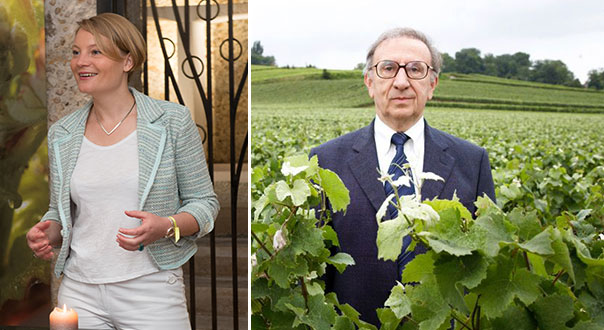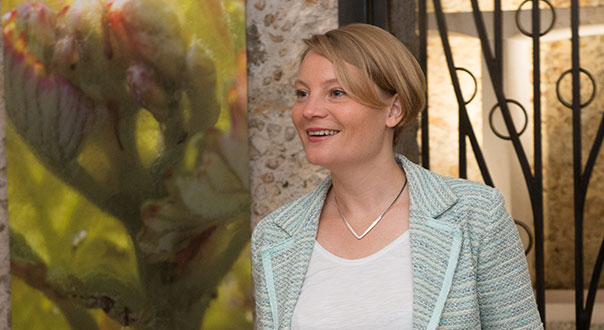With all the hoo-ha of November spring racing season, and the upcoming end of year parties, you’re probably popping more than a few champagne corks behind the bar. Champagne is often the first thing people think of when celebrating, but it’s worthwhile remembering that in amongst the hype and the marketing campaigns, this is one drink steeped in agriculture.
We turned to two champagne producing experts to ask them about how champagne is produced, how they go about sourcing grapes for their fizz, and what goes into their finest cuvees. We’ll also meet the very traditional Frenchman who makes the champagne that Jay Z has recently bought ownership of.
Producer: Jacquart
The Expert: Floriane Eznack.
The Job: Cave or Chief Winemaker – Champagne Jacquart.
Length of time in role: Three years.
Could you give us a brief rundown about how your champagne is produced?
From the meticulous choice of terroirs and grapes to the bottle, Jacquart champagnes are the result of a succession of carefully made decisions.
Created by blending the three classic champagne grape varieties, from different years, different crus or villages and different terroirs the Jacquart house style is fresh and balanced. The structure is firm but fine allowing every nuance of aroma and flavour to shine through.
Like all champagnes the base wines that go to make up Jacquart undergo a secondary fermentation in the bottle before being disgorged and matured on lees for a period of time before release and sale. In the case of Jacquart, the maturation period is between 36 and 40 months, more than twice the minimal requirement. We do this to give Jacquart its added complexity.
How do you source the grapes for your champagne? What do you look for in the grapes?
Jacquart is fortunate in being owned by one of the largest grower producers in Champagne and this year we celebrate our 50th birthday. The 1800 members making up this alliance own nearly eight per cent of the vineyard area in Champagne including some of its most valuable designations spread over 160 villages. These vineyards produce well over the amount of grapes required by Jacquart giving us first pick of the best fruit with the balance sold to other champagne producers or negociants.
All our grapes are hand-picked and hand-sorted with our agronomists and winemakers working closely with our growers at all times to ensure grapes are picked at just the right moment to impart the special characters we’re looking for – freshness and delicate aromas from chardonnay, structure from pinot noir and fruit from pinot meunier.
Could you describe the finest expression in your range and what makes it special?
My personal favourite is Champagne Jacquart Rosé, our Brut Mosaique cuveé to which pinot noir wine is added to give it its beautiful salmon pink colour, lightness and complexity all at the same time.
The finest expression in our range is Champagne Jacquart 2005 Cuveé Alpha, a wine I was asked to help produce to celebrate our 50th birthday this year. It’s a permanent addition to our range, an assemblage which unites in equal parts the power of Pinot Noir, sourced from Grands Crus classified vineyards throughout the Montagne de Reims (Mailly and Verzenay), and the freshness of Chardonnay from Premiers Crus vineyards.(Villers and Trepail).
Aged for six years on lees, Cuveé Alpha truly is a benchmark Champagne representing the beginning of a search for true perfection. A generous vintage, it is a concise expression of the style of Champagne Jacquart, where finesse, purity, precision and harmony reveal the flavours of Champagne.
The Expert: Jean-Jacques Cattier
Role: Head Winemaker
Time in role: The Cattier family has owned and cultivated vineyards in the Montagne de Reims terroir in the French Champagne region since 1763, and patriarch Jean-Jacques Cattier oversees the production of Armand de Brignac Champagne.
Could you give us a brief rundown about how your champagne is produced?
Armand de Brignac is produced by the award-winning Champagne Cattier House of Chigny-les-Roses, France. The Cattier family has owned and cultivated vineyards in the Montagne de Reims terror in the French Champagne region since 1763, and I [Jean-Jacques Cattier] continue to oversee the production of Armand de Brignac.
Our grapes are handpicked from the best vineyards in the three most famous terrors of our La Marne region of Champagne: the Montagne de Reims (home of our own village of Chigny-les-Roses), the Cote des Blancs, and the Vallée de la Marne.
At our winery, we use traditional devices including a Coquart device for pressing and a pupitre for remuage. At the final stage, we use a liqueur de dosage aged in oaken casks from Champagne and Burgundy for a full year to impart a subtle “touch of soul” to the blend. To our knowledge, we are the only House to age just the dosage in oak barrels.
Finally, pewter labels are polished and hand-applied to the distinctively bold bottle, whether for our Gold Brut, Rosé, or Blanc de Blancs.
Each process involved in its cultivation is exclusive to Armand de Brignac and the result is a finished cuvée of unmatched quality and excellence.
How do you source the grapes for your champagne? What do you look for in the grapes?
In each outstanding vintage year, my son Alexandre and I visit the best vineyards in the three most famous terroirs of our La Marne region of Champagne: the Montagne de Reims (home of our own village of Chigny-les-Roses), the Cote des Blancs, and the Vale de la Marne. Choosing from among villages all rated Premier Cru or Grand Cru, we select only the grapes whose character and quality will allow us to meet the requirements of this special cuvée
Could you describe the finest expression in your range and what makes it special?
When we set out to produce Armand de Brignac, our desire was to create the best Champagne in the world!
All three expressions – Brut Gold, Rosé and Blanc de Blancs are the ultimate taste of luxury and considered cuvées de prestige; Champagnes of great distinction.
Crafted entirely by traditional artisan methods and values, from the picking of Grand Cru and Premier Cru grapes, filling, and remuage (riddling), to the application of each pewter label on the opulent, paperless bottles, every process is done by hand and with the strictest attention to detail and highest quality.
Only eight members of the Château staff are entrusted to carry out the production process, and both myself and my son, Alexandre oversee every step.
Armand de Brignac truly reflects the heart and history of the Champagne region and is a traditional brand created for the 21st century.





